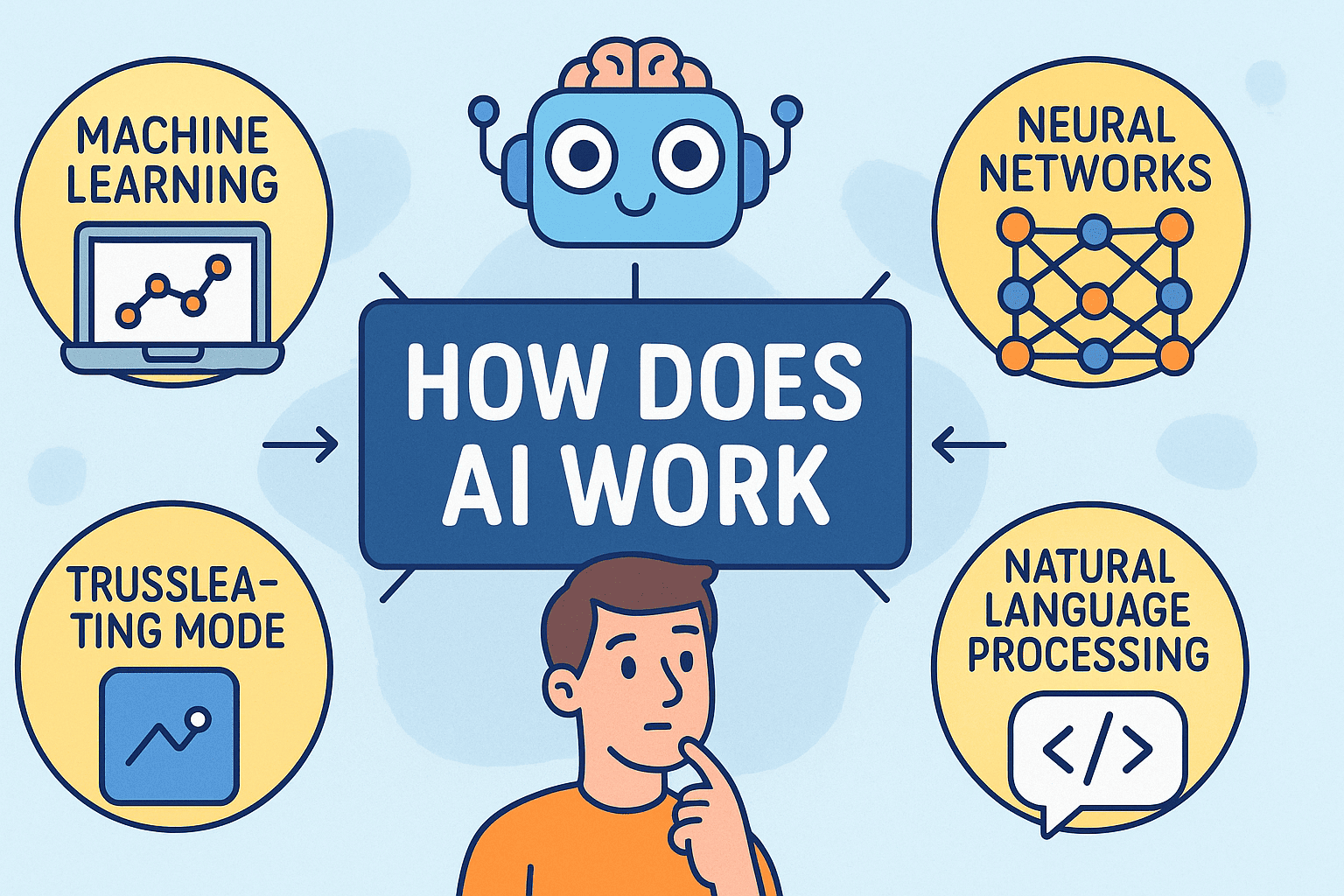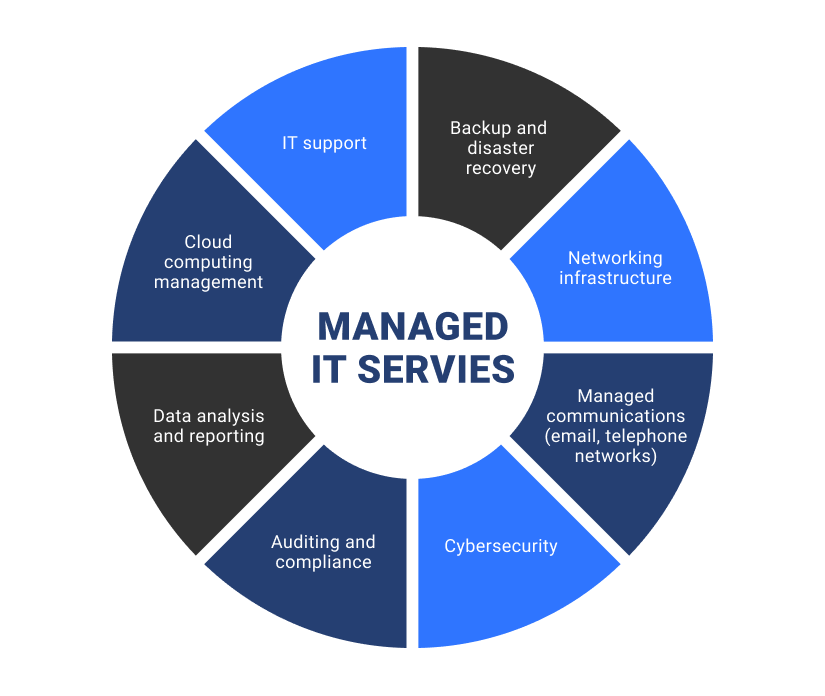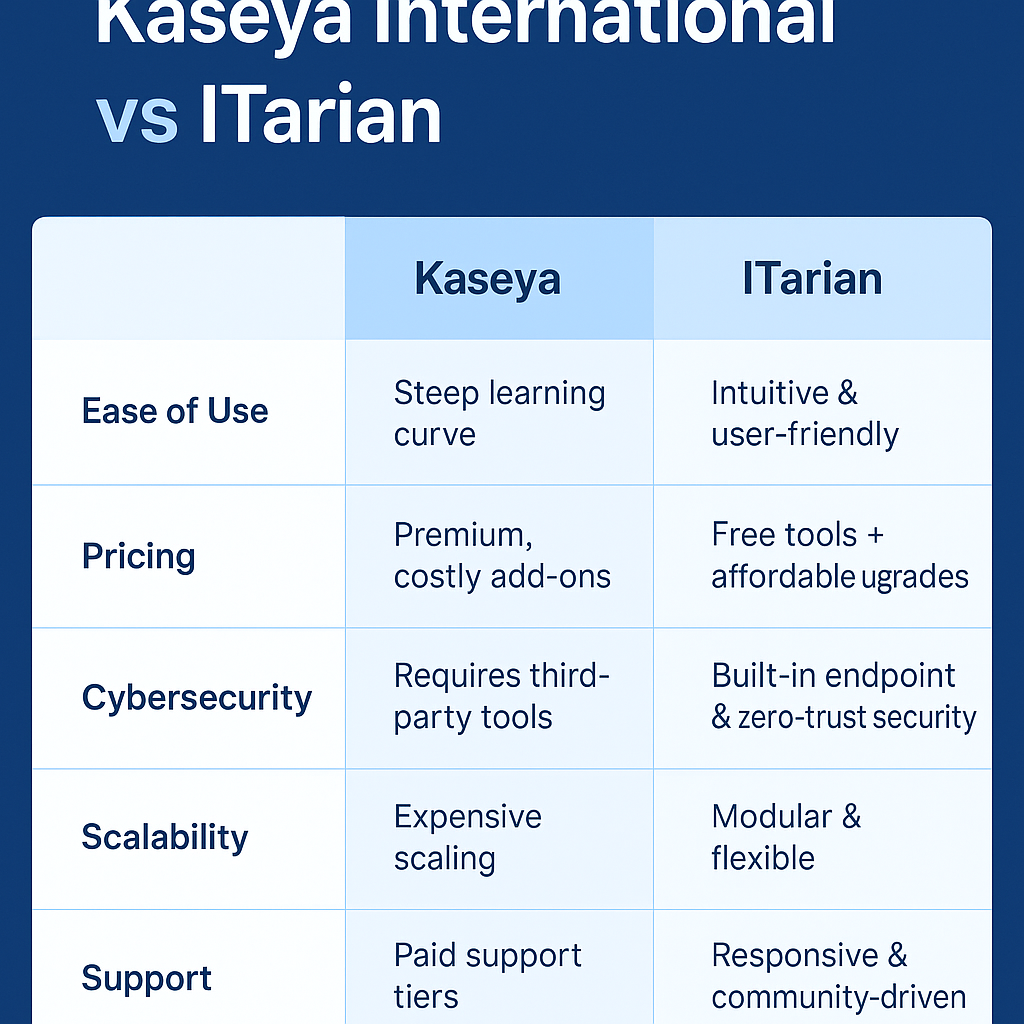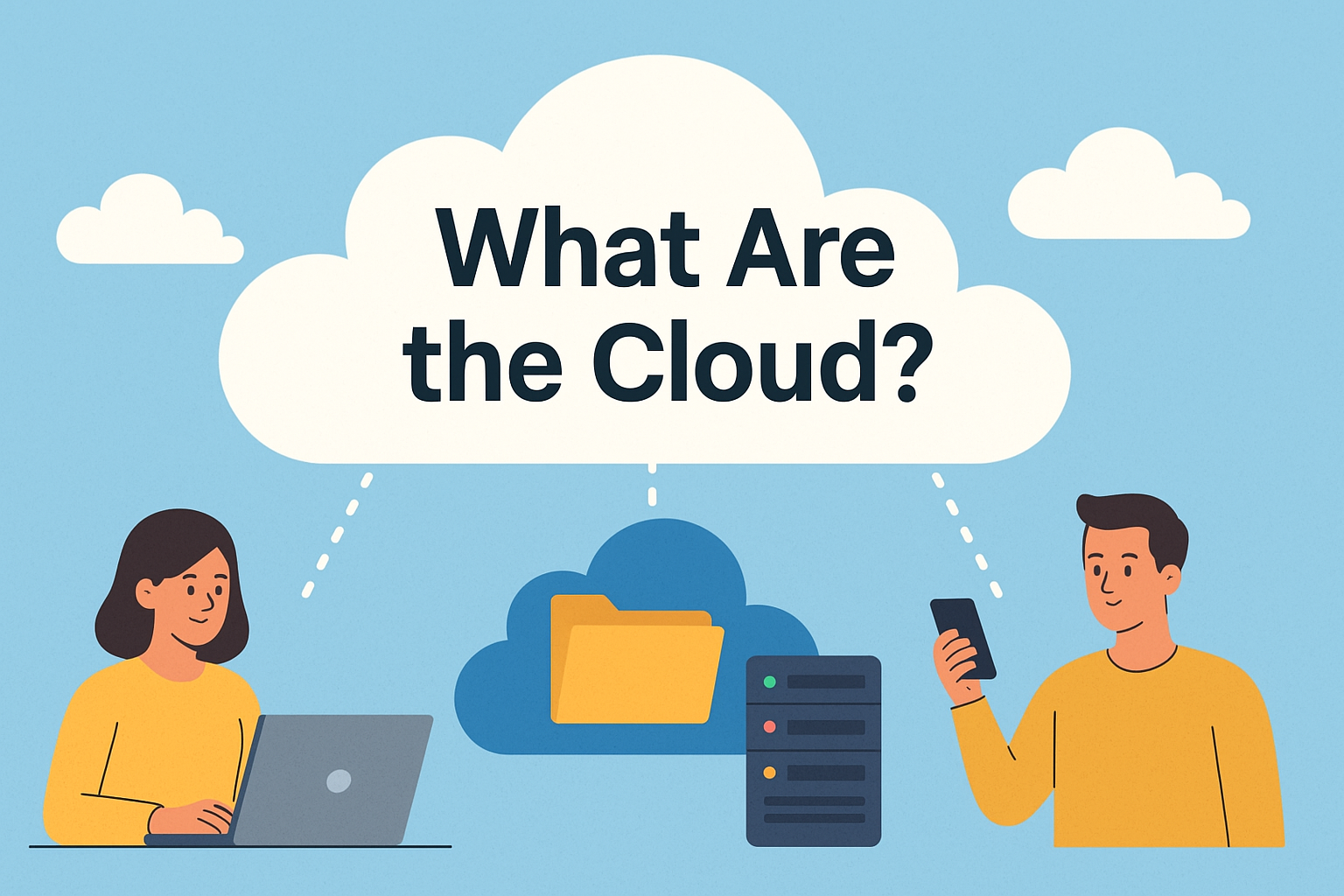Exploring the Inner Mechanics of AI in Action
Updated on June 19, 2025, by ITarian

AI is everywhere—from voice assistants to fraud detection. But how does AI work under the hood? If you’re an IT leader, founder, or cybersecurity professional, understanding the core mechanics of artificial intelligence is crucial for evaluating its potential, risks, and impact on your operations.
Artificial Intelligence (AI) is the simulation of human intelligence by machines. It enables systems to perform tasks like learning, reasoning, problem-solving, and language understanding. But AI isn’t magic—it’s built on layers of technology, data, and smart algorithms. In this guide, we’ll break it down.
What Powers AI: Core Components
Modern AI relies on a combination of software and hardware components. Here’s what makes it tick:
- Algorithms: Step-by-step procedures or rules for solving problems
- Training Data: Labeled examples that teach the AI what to do
- Model Architecture: The framework of how the AI processes inputs
- Computational Power: High-performance GPUs and TPUs speed up training
Together, these elements fuel the next-gen AI systems we interact with daily.
Machine Learning: The Engine Behind AI
One of the most common answers to how does AI work is: Machine Learning (ML).
ML enables computers to learn from data rather than being explicitly programmed. The process involves:
- Feeding data into the model
- Identifying patterns
- Making predictions or decisions
- Getting feedback to improve accuracy
Key Machine Learning Methods:
- Supervised Learning: Learns from labeled data (e.g., spam detection)
- Unsupervised Learning: Finds patterns in unlabeled data (e.g., customer segmentation)
- Reinforcement Learning: Learns by trial and error with rewards (e.g., robotics, gaming)
Neural Networks: AI’s Brain-Inspired Tech
Neural Networks are algorithms inspired by how the human brain processes information. They’re built from layers of “nodes” (neurons) that simulate how we learn and recognize patterns.
Types of Neural Networks:
- Feedforward Neural Networks: Basic structure, moves data one way
- Convolutional Neural Networks (CNNs): Great for image recognition
- Recurrent Neural Networks (RNNs): Used for sequential data like speech or time-series
Neural networks are the foundation of deep learning, which powers advanced tools like facial recognition, self-driving cars, and ChatGPT.
Natural Language Processing (NLP): Teaching AI to Understand Us
Ever used Siri, Alexa, or typed into ChatGPT? That’s Natural Language Processing (NLP) at work.
NLP is a field of AI that allows machines to understand, interpret, and respond to human language.
NLP Capabilities:
- Text classification (e.g., spam detection)
- Sentiment analysis (e.g., product reviews)
- Machine translation (e.g., Google Translate)
- Speech-to-text and text-to-speech
NLP combines linguistics with ML and deep learning to bridge the gap between machines and human communication.
Step-by-Step: How AI Learns and Improves
Here’s a simplified version of how an AI system evolves:
- Data Collection: Collect structured or unstructured data
- Preprocessing: Clean and label the data
- Training: Use ML algorithms to build a model
- Evaluation: Test model accuracy with new data
- Deployment: Use the model in a live environment
- Monitoring & Retraining: Continuously improve over time
This lifecycle ensures AI systems evolve, adapt, and deliver reliable results.
AI Use Cases by Industry
• Cybersecurity: Detecting anomalies, phishing, threat hunting
• Healthcare: Diagnosing diseases, drug discovery, patient monitoring
• Finance: Fraud detection, algorithmic trading, credit scoring
• Retail: Personalized shopping, chatbots, demand forecasting
• Manufacturing: Predictive maintenance, quality control, automation
Pros and Cons of AI in the Real World
| Pros | Cons |
| Automates repetitive tasks | Can be biased if trained on bad data |
| Enhances decision-making | Lack of transparency (black box) |
| Operates 24/7 | High implementation cost |
| Enables real-time responses | Data privacy concerns |
It’s important to weigh these trade-offs when adopting AI solutions.
How Secure Is AI?
In cybersecurity, AI is a double-edged sword. On one hand, it enables faster threat detection and response. On the other, adversarial AI can trick models into making dangerous errors.
Security Tips:
- Regularly audit training data and outputs
- Use explainable AI (XAI) models when possible
- Combine AI with human oversight
- Keep software and ML models updated
The Future of AI
AI is moving fast, with advancements like generative models (ChatGPT, DALL·E), robotics, and autonomous systems reshaping how we work and live.
Expect broader adoption, stricter regulation, and stronger integration with machine learning, neural networks, and natural language processing platforms.
Final Thoughts
So, how does AI work? It’s a layered process involving data, algorithms, and human-inspired models that allow machines to learn and adapt. From machine learning to NLP, the possibilities are endless—but so are the responsibilities.
Understanding how AI functions is the first step toward leveraging it effectively and ethically in your organization.
Ready to make AI work for you? Start your free trial today.
FAQ: How Does AI Work?
1. What is AI in simple terms?
AI refers to machines that simulate human intelligence to perform tasks like learning, decision-making, and language understanding.
2. How is machine learning different from AI?
Machine learning is a subset of AI that focuses on algorithms that learn from data. AI includes ML, NLP, robotics, and more.
3. Can AI make mistakes?
Yes. If trained on poor-quality or biased data, AI can produce inaccurate or unfair results.
4. Is AI dangerous?
AI can pose risks if misused or poorly implemented, especially in areas like privacy, bias, or autonomous weapons.
5. How can I start using AI in my business?
Begin with small, high-impact use cases (like chatbots or predictive analytics), and consult with experts or vendors that support scalable solutions.














